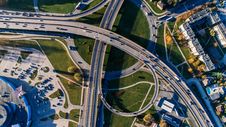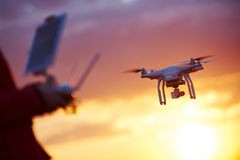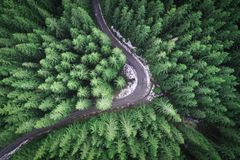What you need to know about Drone Videography
Are you thinking of experimenting with drone videography? Considering it as a new career path but don’t know where to start?
Drone videography is great a skill to have, you can create incredible shots of landscapes, cityscapes, work on films, weddings and any other type of video. Drones give you a lot of freedom to capture footage you would not otherwise be able to.
Before you get started, here are 5 basic tips you should keep in mind and look into before pursuing this form of video making.
Learn the rules
Drone videography is not the same as just popping out with a camera to film a video, there are specific rules and regulations for when and where you can film, so make sure you do your research before shooting anything. If you’re based in the UK you can access the government guide on how to safely and legally fly drones.
 Learn filmmaking
Learn filmmaking
If you plan on getting into drone videography because you’re just excited by flying drones, you may be disappointed. You still need to have a passion for video and an understanding of basic filmmaking techniques and approaches. So before you invest in a drone, maybe look into filmmaking. Start by watching videos online or maybe taking a class, to learn about angles that look good, camera movements and the different storytelling they imply, what lighting works for every shot.
You don’t only need to know how to film, you’ll need to think like a filmmaker. This means planning ahead for every shoot, potentially drawing storyboards, shot lists, scheduling your shots. Every detail will affect your video and change the mood and story it conveys.
Wait for the perfect lighting
Drone videography is trickier to light because you don’t have as much control over the lighting in the sky as you do on the ground. You can’t use artificial lights up there or control the sun, so you need to just wait until the light is naturally optimal. Most videographers will recommend shooting at ‘golden hour’, this is typically the last hour before sunset or the first hour after sunrise. This time seems to provide the best natural light for photography and videography outside.
Perfect the drone movements
As you would with any camera, you’ll need to practice some basic moves before you start working on a project. The main moves drone operators suggest learning are the below:
- The pan: Move slowly from left to right in a straight line across the fixed object you are shooting.
- The birds-eye-view: Position your gimbal facing downward and slowly move up. While you’re moving higher up, you can slightly ‘yaw’, which means rotating clockwise or counterclockwise slowly.
- The orbit: Pick a fixed point and circle around it, you’ll need to use both joysticks simultaneously.
- The forward reveal: Move your drone forward and slowly tilt the camera up or down to reveal something in the shot.
- The dronie: This is the drone equivalent of a selfie, the move starts by hovering at eye-level with the camera facing you, then slowly flying backwards and upwards. It sounds simple but it can be difficult to move back and up at the same time, while also keeping the focus on yourself.
Adjust your camera settings
Before you start filming, make sure your camera settings are right for drone videography. These are some of the suggested settings to apply before your shoot:
- Manual Camera Settings: Manual settings will help make your video more professional than automatic ones will. For example, when you are moving from a dark to a brightly lit area the auto exposure would create a rapid and jarring change on the video.
- ND Filter: Especially if you’re filming during the day, an ND or a Polarizer filter will drastically improve your footage.
- Enable Overexposure Warning: Any part of a shot that is overexposed cannot be recovered in post, so enabling this warning can save a lot of footage. The setting will show a zebra pattern over overexposed areas, allowing you to adjust before shooting or moving on to the next shot.
- Enable Grid Lines: Turning on the grid lines can help you follow the rule-of-thirds, if you’re aiming to frame your images that way. You can also turn on a ‘centre pointer’ which helps you keep the video’s subject in the middle of the frame.
For more detailed tips about drone videography you can visit these helpful articles by UAV Coach and I Hit the Button.
If you’re more of a visual learner, there are many videos on YouTube with tips on drone videography, such as this one:
For another really useful resource on the same subject, click HERE




Recent Comments